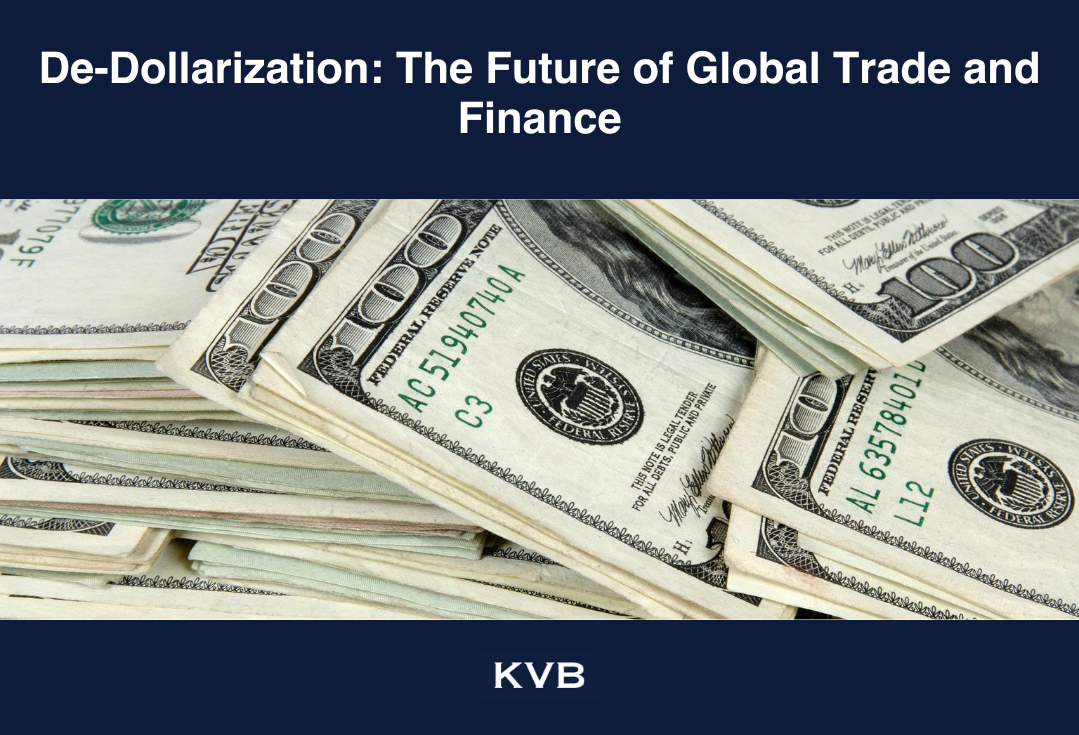


The global economy has long revolved around the US dollar, often referred to as the world’s reserve currency. From oil trades to international debt, the dollar’s dominance has been central to financial stability and geopolitical influence. However, a growing trend among emerging markets suggests a shift in the winds—countries are actively exploring alternatives to the dollar in a process dubbed "de-dollarization." Is the global financial system at a tipping point, or is the dollar's supremacy here to stay?
The Roots of Dollar Dominance
The dollar’s position as the leading global currency was cemented after World War II with the Bretton Woods Agreement in 1944, which established the dollar as the backbone of the international monetary system. Decades later, this dominance remains, with nearly 60% of global foreign exchange reserves still held in US dollars as of 2023. Trade agreements, commodity pricing, and even economic aid are often denominated in dollars, reinforcing its universal appeal.
However, emerging markets have been increasingly vocal about the risks associated with an over-reliance on the dollar. These include vulnerabilities to US monetary policy decisions, exchange rate fluctuations, and geopolitical sanctions that disproportionately impact nations dependent on dollar-denominated transactions.
Emerging Markets’ Push for Change
Several factors have catalyzed the de-dollarization movement in recent years.
- Geopolitical Tensions
US sanctions on countries such as Russia and Iran have underscored the risks of dollar dependence. In response, Russia and China have intensified efforts to settle trade in their own currencies or via alternatives like the yuan. The BRICS nations (Brazil, Russia, India, China, and South Africa) are also actively discussing the possibility of creating a new reserve currency to reduce dollar reliance.
- Bilateral Trade Agreements
Emerging markets are increasingly engaging in trade agreements that bypass the dollar. For instance, India and Russia have been conducting transactions in rupees and rubles, while China has strengthened its push for the yuan as a viable trade currency, especially in Africa and Asia. These agreements aim to minimize exposure to dollar-driven fluctuations and enhance economic sovereignty.
- Digital Currencies
The rise of central bank digital currencies (CBDCs) offers another avenue for reducing dollar dependence. China’s digital yuan project is a leading example, allowing for international transactions that bypass traditional dollar-dominated systems like SWIFT. Other countries, such as Brazil and India, are also exploring digital currencies to facilitate cross-border trade.
Challenges to De-Dollarization
Despite these efforts, de-dollarization faces significant hurdles.
- Entrenched Dollar Networks
The global financial infrastructure remains heavily dollar-centric. Systems like SWIFT and the International Monetary Fund (IMF) operate predominantly in dollars, making it challenging for alternative currencies to gain traction on a comparable scale.
- Market Liquidity
Currencies such as the yuan and euro do not have the same liquidity and market depth as the dollar. This makes them less attractive for international transactions, especially in volatile economic conditions.
- Trust and Stability
The dollar's appeal lies in the perceived stability of the US economy and its robust financial systems. Many emerging market currencies lack the trust needed to replace the dollar, given concerns over political instability, inflation, and inconsistent monetary policies.
Potential Winners and Losers
If de-dollarization gains momentum, the financial landscape could undergo a seismic shift.
- Winners
Emerging economies with strong trade networks and resilient currencies could benefit from reduced dependence on dollar-dominated systems. Countries like China and India, which are proactively developing alternatives, may gain greater economic autonomy and geopolitical clout.
- Losers
The US could face reduced influence in global financial markets, potentially leading to weaker demand for its currency. This may increase borrowing costs for the US government and strain the country’s ability to finance its deficits. Additionally, nations heavily reliant on dollar reserves could face transitional challenges.
The Role of Multilateralism
One of the most significant shifts in the de-dollarization debate is the focus on multilateralism. Rather than simply replacing the dollar with another single currency, many emerging markets are advocating for a diversified global financial system. This approach would involve multiple currencies playing complementary roles, thereby reducing the risk of overdependence on any one currency.
For instance, the IMF has floated the idea of expanding the role of Special Drawing Rights (SDRs), a basket of currencies that includes the dollar, euro, yen, pound, and yuan. By promoting a multipolar currency system, countries can mitigate the risks associated with unilateral monetary policies.
Is the Dollar Era Ending?
While the de-dollarization movement is gaining momentum, it is unlikely to dismantle the dollar’s dominance overnight. The transition to a truly multipolar currency system would require years of coordinated effort, structural reforms, and trust-building among nations.
For now, the dollar remains the bedrock of global trade and finance. However, the growing willingness of emerging markets to explore alternatives signals a broader push for economic sovereignty and reduced reliance on US-led systems. Whether this translates into a permanent decline in dollar dominance or simply a more balanced global system remains to be seen.
The de-dollarization debate reflects a deeper shift in global power dynamics, with emerging markets striving to carve out a larger role in the financial world. While challenges persist, the push for diversification is a clear indication that the days of unquestioned dollar supremacy may be numbered.
Disclaimer
Derivative investments involve significant risks that may result in the loss of your invested capital. You are advised to carefully read and study the legality of the company, products, and trading rules before deciding to invest your money. Be responsible and accountable in your trading.
RISK WARNING IN TRADING
Transactions via margin involve leverage mechanisms, have high risks, and may not be suitable for all investors. THERE IS NO GUARANTEE OF PROFIT on your investment, so be cautious of those who promise profits in trading. It's recommended not to use funds if you're not ready to incur losses. Before deciding to trade, make sure you understand the risks involved and also consider your experience.
